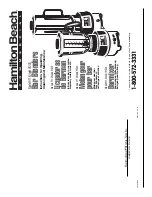
Application Report
SLEA004 – May 2002
1
Extending Battery Life With the TPS61040 White Light LED
Driver
Michael Day
Power Management Products / Portable Power DC-DC Applications
ABSTRACT
This application note describes how to extend the battery life of a circuit that uses Texas
Instrument’s TPS61040 low power dc-dc boost converter for driving white light LEDs.
Power loss in the current sense resistor is discussed, and a method for reducing this loss
is presented. Design equations are given for calculating the proper resistor values for a
white light LED driver that includes provisions for dimming the LED brightness.
A current source, rather than a voltage source, typically drives white light LEDs. The TPS61040 is
ideally suited for this application. TPS61040EVM-002 User's Guide, TI literature number SLVU068
provides a detailed discussion of how to drive white light LEDs. To summarize, regulation of the LED
current is accomplished by monitoring the voltage across a current sense resistor. Any power
dissipated by the current sense resistor is lost and reduces battery life. The key to extending battery
life is to reduce the losses in the current sense resistor.
Figure 1 shows a TPS61040 low power dc-dc boost converter application that drives four LEDs and
includes the capability to dim the LED light output. The resistor values in Figure 1 were calculated
using the equations in the Analog Dimming with Analog Voltage section of the EVM user's guide cited
above. For this design, the maximum desired output current is 20 mA, and the current may be dimmed
from 20 mA to 0 mA by injecting 0 V to 3.3 V into the VADJ pin. With these parameters, the full scale
voltage across the current sense resistor, R4, with Iout= 20 mA is 2 V. This results in a power loss of
40 mW. The four LEDs in series only require a forward voltage of 12.7 V at 20 mA, but the circuit is
forced to generate 14.7 V at 20 mA.























